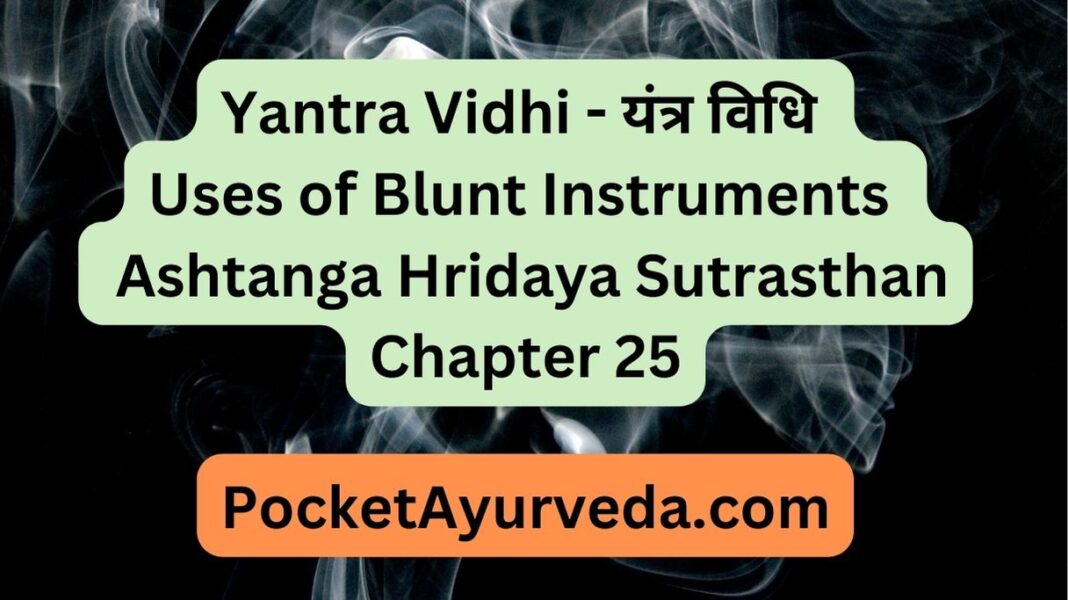We will discuss the different types of instruments –yantra utilized in Ayurveda. This is the 25th chapter of Ashtanga Hrudaya Sutrasthana, written by Acharya Vagbhata, the son of Vaidyapathi Simhagupta. The chapter’s title is Yantra Vidhi Adhyaya. Yantra is a reference to an instrument.
Definition of Yantra – Yantra Nirvachana –
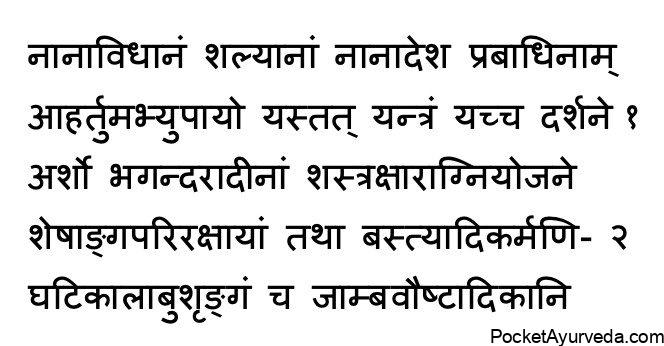

Definition of Yantra – Yantra Nirvachana
Equipment that can be useful for
Find the foreign bodies that cause discomfort in various body parts.
To look into hemorrhoids, rectal fistula, etc.
to use sharp instruments and Alkalies (Kshara) as well as to apply fire (Agni Karma);
to safeguard the rest of the body that is not affected by treatments like enema,
and the (Ghatika) and the ground and the horn (Alabu) of an animal, Jambavaustha– cylindrical, smooth stone, etc. are all referred to as the Yantra (medical instrument). 1-2 1/2


Yantras (instruments) have various shapes, functions, and varieties, so they are designed to be made using intelligence. 3
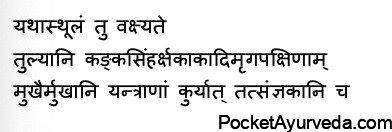

Yantras are briefly described in the following manner:
The ones with mouths that resemble the mouth of
Kanka (heron), Simha (lion), Ruksha (bear), and Kaka (crow), as well as other animals and birds, must be prepared with the names of the animals and birds.
Swastika Yantra – Cruciform instruments
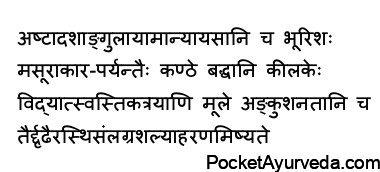

Swsatika Yantras are generally 18 Angula long
They are made mostly from iron.
They’re shaped like the shape of a Masura dala (cotyledon that is a lentil) around their edges. A rivet bolt around their neck holds them. They are slightly bent to resemble one. Ankusha (goad from the elephant) on its handle. They are called Swastika yantra and Cruci in the context of musical instruments.
They help pull out foreign bodies trapped inside the bones. 4-6
Samdamsha forceps and yantras are available in two varieties, two types


Samdamsha Yantra – forceps are of two types
one with a hook at the tip, one without a catch.
The one that has an enticement is the sixteen Angula length, which is used to remove foreign bodies that have gotten trapped in the veins, skin, and muscles. ;
The one that does not have a trap is Angula in length and is helpful to remove tiny foreign bodies and eyelashes. 7-8
Muchundi Yantra – forceps with teeth


Muchundi Yantra – forceps with teeth
Muchundi Yantra forceps with teeth that are small and straight, with a tooth catch and hook at its roots; great for extracting the fleshy part from deep wounds and relics in the flesh of Arma (pterygium) that is cut. 9
Talayantra- instruments that have flat arms


Talayantra- instruments with flat arms
Talayantra : Instruments with arms that are flat are of two types: 12 Angula length that resembles the mouth (fin) of the fish.
– with a flat disc in its mouth;
Two discs flat;
Both are helpful in the removal of foreign bodies out of the orifice of the ear. 10
Nadiyantra – Instruments made of tubular (probe)
Nadiyantra – Tubular instruments (probe)
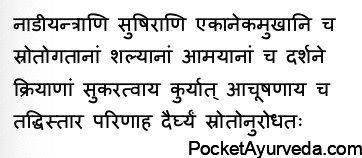

Nadiyantra Tube devices (probes)are hollow, with one or more openings that are useful for looking at organs, recognizing foreign bodies and diseases localized in the channels of tissues to aid in treatment, and sucking out. Their dimensions, length, and width vary depending on the size, shape, and shape. In the channel. 11-12


Nadi Yantra to see inside the throat will be 10 Angula long and 1/2 Angula in diameter.


Nadi Yantra has many openings (4 to 5) with various sizes in length, width, thickness, etc.


Other tubular instruments can be used to observe foreign bodies based on the part’s form, thickness, and length of the component to be observed.14
Padma Karnika Yantra


Padma Karnika yantra
The instrument in tabular form has the form of Padma Karnika, which is the flat, round central portion of the lotus adorned with tiny holes – on its highest point, twelve Angula finger breaths in length, and an area hollow of one-fourth – its size can be helpful in getting rid of foreign body.15
Arsho Yantra


Arsho Yantra
The Arsho Yantra is the instrument to observe hemorrhoids within the rectum. It is cylindrical.
The ring’s circumference is 5 Angula for men and 6 Angula for women.
with two orifices – one at each end, which is helpful in seeing the piles and
With one slit at its center with a length of three Angula and the width of the middle of the thumb in widths approximately half an Angula higher than the slit. It should be an edge of karnuka (rim) 16-18
Samiyantra


Samiyantra
The instrument referred to by Samiyantra is similar to the one above, but without the offices, and is helpful to squeeze the pile mass. 19
The Nadiyantra to detect tumors, piles, and malignant nasal polyps should be with one orifice and two Angula long,


in the exact dimensions as the index finger’s size, and resembling an instrument designed for the rectal fistula. 20
Nadi Yantra to See Nasal Polyps, Piles, etc


It should be made with only one orifice and two angula long, the same size as the index finger’s thickness, and similar to the instrument used for the rectal fistula.
Anguli Tranaka- finger protector


Anguli Tranaka- finger protector
Anguli Tranakais a finger guard made out of wood and ivory and measures 4 Angula in length, and has two orifices- one at each end designed to resemble the nipple of the cow. It is suitable for extending the finger (when it is in use). 21
An instrument for examining Vagina and Wounds
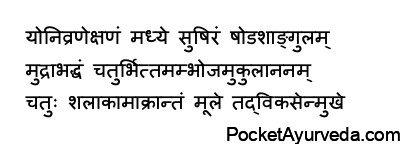

Instrument to look into Vagina and Wounds
The instrument for looking into the vagina and the wounds should have a hollow middle 16. Angula long, and four flaps secured with a ring. It is shaped like the lotus’s bud in form and secured with four rods in its root and handling point, and its mouth opens like a bud. 22
Instruments to oil the sinus and clean it clean.
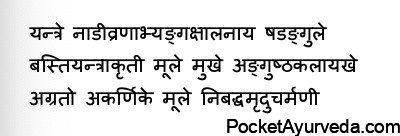

Instruments to oil sinus and to wash sinus
Two instruments to oil the sinus ulcer, another for washing it. It should have a length of 6. Angula in length, with the form of a Bastiyantra (enema sprayer) with an orifice in its center that allows for the entry of the thumb, and the orifice on its top allowing round peas, without edges, a rim at the tip, and secured with a soft leather bag around the base. 23-24 1/2
Nadi Yantra for Udakodar/Ascies


Nadi Yantra for Udakodar/Ascies
Nadiyantra is suitable for Udakodaraascites and should contain two orifices, one at each end, or it could even be the peacock’s tube feather. 25
Shringa Yantra – Animal Horn


Shringa Yantra – Animal Horn
The Shringahorn of animals suitable for sucking will have an orifice of three Angula at its root and the mustard seed at its tip, 18 Angula long. The shape of the information is similar to that of a nipple. 26
Alabu The hollowed gourd


Alabu- the hollowed gourd
The Alabu– the hollowed gourd is 12 Angula in length and 18 Angula in diameter. It has an orifice round of four Angula in the middle with a burning wick, which helps extract Kapha and Raktha blood. 27
NoteThe method described in the Alabu yantra can be characterized as cupping. If pus or vitiated blood is needed to be removed from a wound or ulcer, Alabu yantra is placed over the affected area and is heated from the outside. It expands, causing a vacuum inside. This triggers sucking, and the pus/vitiated blood is sucked out.
Ghati Yantra – pot


Ghati Yantra – pot
Ghati-pot is similar and helpful in making abdomen tumors soft and elevates the level of its lower part. 27 1/2
Shalaka Yantra – set of instruments that have rod-like shapes
shlaakaayaan yaann naanaakmaakRtiin c ythaayogmaannaan tessaamessnnkmnn
Shalaka Yantra – a collection of instruments featuring rod-like shapes


Rod similar instruments serve numerous functions and shapes, as well as dimensions that are suitable for their purpose. 28


Two are designed for probing, each one with mouths that resemble the mouth of a worm from Earth;
Two methods for removing foreign organisms from the channels with their mouths comparing lentils, one of eight and the second that is 9 Angula long. 29
Shanku Yantra – Hooks
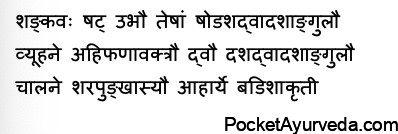

Shanku Yantra – Hooks
Shanku Yantra hooks have six, with two (16 and 12 angula long). Their mouths are shaped like the hood of a serpent and are designed to join (the sides of wounds, etc.);
Two additional ones- one of twelve and the second of 10 Angula in length, with a mouth that resembles a Sharapunkha (bottom of an arrow) designed to loosen the hard objects to be removed. Its size resembles that of the size of a hook for fishing. 30-31


The hook, also known as Garbhashanku, is bent at its tips, resembling a conch. It is 18 Angula in length and is designed to pull the fetus impacted in females. 32
Instrument to remove the stone from the urinary bladder.


An instrument for extracting the stone from the urinary bladder
Instrument to remove the urinary bladder. It should be shaped like the snake’s hood and bent downwards towards its point.
Instrument to extract the tooth


An instrument for extracting the tooth
The instrument for extracting the tooth must have the form of Sharapunkha (base of an arrow) and should be of four Angula lengths. 33
Instruments shaped like rods intended to cleanse sinuses and other sinuses


The rod-like instruments used to clear sinuses will be fitted with a cap that covers their tips with a cap made of cotton wool.
Two other Nadi yantra (rod-like instruments)


Two more Nadi Yantra (rod similar to instruments)One of them is 10 and another of 12 AngulaIn length; they are used to draw the rectum closer by closing the thing and then extending them further. 34


Two additional instruments, seven and six Angula, respectively, will be used in noses. Two of the eight and nine Angula are to be used for the ears.
Yantra to help clear the ear


Yantra for clearing the ear
It was meant to be cleared of the ear, which has edges resembling those that are part of the Ashwattha tree, and its face resembling the shape of a spoon. 35
Jambauvoshta- Cylindrical, smooth stones


Jambauvoshta- Cylindrical, smooth stones
Jambauvoshta – Cylindrical, smooth stones, each three in number, are thick, thin, and long in shape and can be utilized for the application of caustic Alkalies as well as branding with fire-based treatments.
To be used for use in the international Hernia- – in the scrotum


For use in international Hernia- in the scrotum
It is designed to be used in international Hernia in the scrotum; it will have an oval rod that is larger at its upper and middle portion, and its roots that are shaped as the half moon, 36.
An instrument for cauterizing the polyp


Instrument for cauterizing the polyp
The instrument for cauterizing the cancerous polyp and the nose will have a mouth similar to that of the cotyledon in the stone of the Kolathe Jujube fruit. 36


The tree used for caustic alkali therapy should be eight Angulain lengths. Their mouth-tips resemble fingers of the index, middle, and ring fingers in size. 38


The hose used for cleaning the urethra or penis and applying eye salts is explained in the appropriate locations to be followed.
Anu yantra- Accessory instruments:-


Anu yantra- Accessory instruments:-
Accessories instruments include the magnet, thread/ rope cloth, stone, leather straps, hammer intense-of animals hair, tongue tree branches, the mouth of nails teeth, time feet, digestion hands, and pleasure and fear.
They are administered cautiously depending on the patient’s condition and disease assessment. 39-40
Many uses of Yantra Different functions of Yantra


Nirghatana pulling out after crushing Unmathana- pulling it out after twisting. Pooranafilling
Marga Shuddhi- clearing the way, Vyuhana- bringing together,
Aharana – extracting,
Bandhana- binding,
Peedana- Rubbing,
Achushana – sucking,
Unnamana – lifting,
Namana- pushing down, bending down Chalana- shaking,
Bhanga- breaking,
Vyavartana- overturning,
Rujukarana- straightening etc., are the main functions of Yantraswhich are blunt instruments. 41


In the category of instruments with blunt edges, Kankamukha Yantra is the most effective because it can be easily bent, dipped, and held with a firm grip and grips objects with a firm grip, and is the king of every place. It is essential. 42
The chapter is now called Yantravidhi, the 25th chapter in Sutrasthana from the Asthangahrdaya Samhita.


